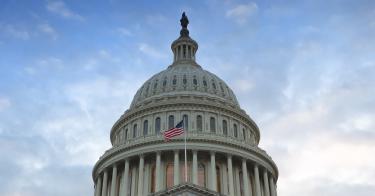The 800,000 or so federal civilian employees who spent five weeks either furloughed or working without pay have all since received their pay for the government shutdown period. Despite this, some lawmakers want to give federal civilian employees a 2.6 percent pay raise with the Federal Civilian Workforce Pay Raise Fairness Act of 2019. Putting federal workers in the middle of political disagreements was clearly not fair, but riding on public sympathy to give them a 2.6 percent pay raise, which is the equivalent of about $2,200 for the average federal worker, is not a resolution for this.
In addition to costing taxpayers about $4.6 billion in 2019 and more than $50 billion over the next decade, the proposed pay raise would serve as the second such raise for a majority of federal workers this year. It would also increase the large compensation premium federal workers receive. Unlike most private sector workers, federal workers receive two effectively automatic pay increases. The first is an annual cost of living adjustment, which is at play here. The second is a step increase that occurs every one year to three years, depending on the different levels for federal workers.
Thus, even without the 2.6 percent adjustment, about 60 percent of federal workers will receive a step increase in 2019. Two raises every year contributes to their significant compensation premium. The latest numbers show the average federal worker receives $121,000 total in compensation, with $83,600 in pay and $37,400 in benefits. The average private sector worker receives about $69,000 total in compensation, with $48,100 in pay and $20,900 in benefits. The average federal worker has more education and experience than the average private sector worker.
However, even looking at similar jobs, studies have consistently found that federal employees are overcompensated compared to their private sector counterparts. The American Enterprise Institute estimated a 61 percent premium, while the Heritage Foundation calculated up to a 40 percent premium. The Congressional Budget Office itself estimated a 17 percent premium. Furthermore, none of these estimates include federal employee benefits such as student loan payments, retiree health benefits, and child care subsidies that almost certainly add to the compensation premium.
Freezing federal worker pay through executive order by President Trumpat the end of 2018 is not the most effective way to reduce this premium. That is because some federal government positions, particularly those requiring the most skill and education, provide lower compensation than the private sector, making it difficult for the federal government to attract and retain employees for their top level positions. To that end, President Trump has proposed creating a $1 billion workforce fund to help recruit, retain, and reward the high performers who have mission critical skills.
But without Congress, there is not much President Trump can do to close the overall compensation gap aside from freezing the federal cost of living adjustment. Federal compensation reform is needed to better align it with that of the private sector, including linking pay to performance, reducing the share of compensation tied up in retirement benefits, cutting back on paid leave or shifting to paid time off, giving workers more options on how to use their benefits, and making sure that managers have the appropriate means to reward the high performers and address the poor performers.
A more efficient and effective civil service system would save taxpayers more money, help the federal government attract the best and brightest workers, and create a better work environment for federal employees.
This piece originally appeared in The Hill on 2/7/19




